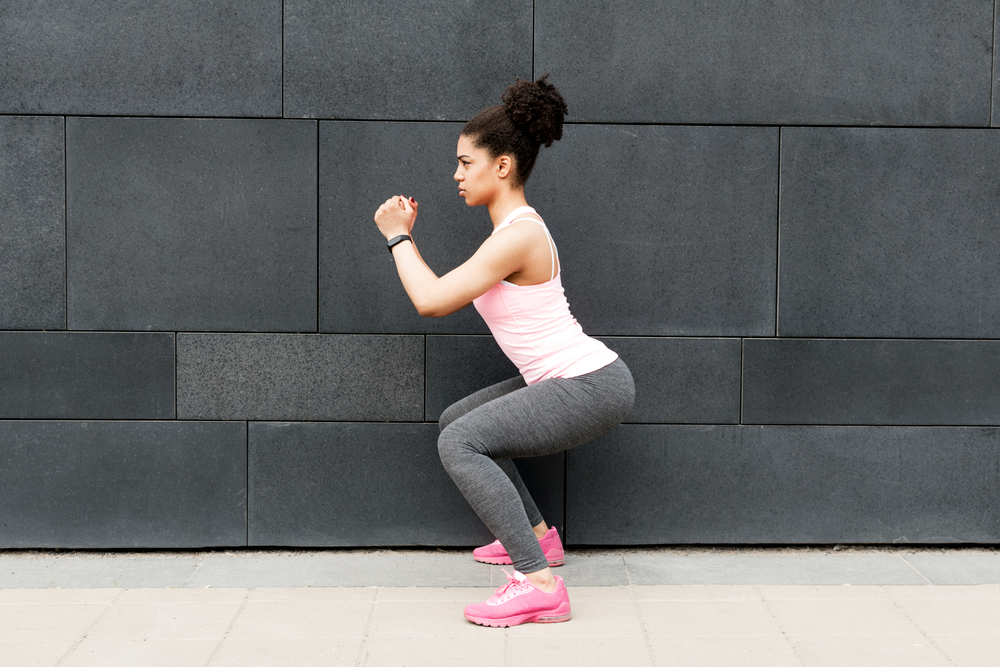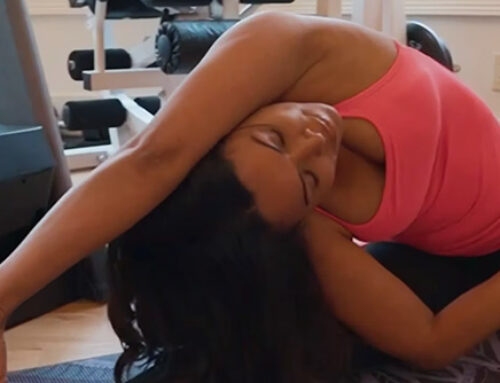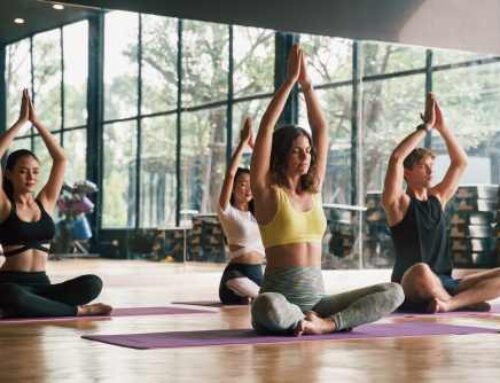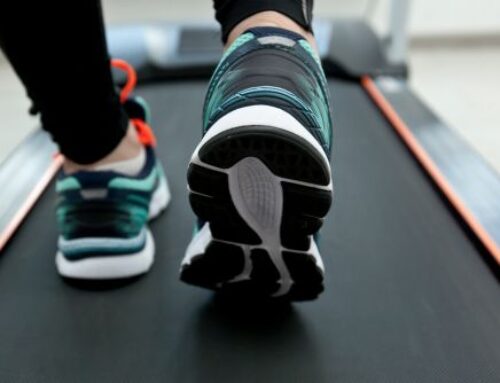Strength Training Can Help Prevent the Development of Cancer
Exercise is one of the foundational pillars of developing and maintaining optimal health. Strength training is just one type of exercise that may be used to maintain muscle mass, strengthen muscles and, when done without rest between sets, can be part of a cardiovascular high-intensity interval training (HIIT) session.
For some, strength training, or weight training as it is also called, may be out of your comfort zone. It may feel intimidating to walk into a weight room filled with men “pumping iron” or you may feel that strength training is only for those who want to “bulk up” and train for a Mr. Universe competition. However, there are strategies you can use that reduce your discomfort and result in strong, flexible muscle tone.
Below is a training routine you can use at home to maintain and improve your muscle development, all without equipment. Bodyweight strength training has been popular for decades since it’s efficient, cheap and effective. Before I share this simple, yet effective, routine, let’s quickly discuss why you want to include this form of exercise in your weekly routine.
Why Weight Work?
Strength training has a number of benefits to your health and wellness. As you age, your body naturally loses muscle mass. The medical term for this condition is sarcopenia, and it is one of the most important causes of functional decline and loss of independence in older adults.1 Sarcopenia is defined as both a loss of muscle mass and functional strength.
In one survey, seniors expressed greater fear of loss of independence than of death.2 Loss of independence is also costly. The Family Caregiver Alliance estimates that by 2050 the number needing paid long-term services will rise to 27 million.3 Lost income and benefits of individuals caring for family at home averages $303,000 over a lifetime. You may reduce your potential risk for loss of independence by using simple strength-training exercises to slow sarcopenia, improve muscle strength and improve your balance and coordination.
Strength training may also help prevent the development of cancer. In a recent study, scientists found strength training, even without using weights, cuts your risk of cancer.4 The study showed that strength training at least twice a week reduces your risk of death from cancer by 31 percent.5 When combined with aerobic activities, the risk of dying from any cause is reduced by an impressive 30 percent.6
When strength training is combined with optimal levels of vitamin D, the benefits are even greater. In my previous article, “How Vitamin D Can Help Slash Your Risk of 7 Different Acute and Chronic Disease,” I shared how the combination of strength training and vitamin D could reduce your risk of Type 2 diabetes and the deposition of visceral fat.
Your waist-to-hip ratio, which is a numerical indicator of the amount of fat deposited in your abdominal cavity, is a far better measurement to determine your risk of Type 2 diabetes, cardiovascular disease and high blood pressure than your body mass index.
Research has demonstrated strength training improves cognitive performance and the gains were retained for 12 months after participants finished the study.7 A second study using only women found regular resistance exercises led to gains in upper and lower body strength and in cognitive performance.8 In yet another study, researchers found resistance training improved cognitive and functional plasticity in seniors who already had mild cognitive impairment.9
It is important to remember that it is never too late to start a strength-training program. Consult with your physician to ensure you don’t have any underlying medical conditions that may interfere with your program. Research has demonstrated that regular physical activity is healthy and safe even for frail older people, and it decreases the risk of developing metabolic disease, obesity, falls, cognitive impairment and cardiovascular disease.10
Bodyweight Workouts Are Effective
There is a difference between training to add bulk or size to your muscles and training to add strength and endurance. The exercises you’ll find below will help you to add strength and endurance, and will also help you to develop a strong core and improve your overall balance and coordination. Some trainers argue that bodyweight exercises are even better than using free weights.11
The difference between building size and strength is not in what you use but in how you structure your workout. To build size your body requires your muscles are stressed with more weight and balanced with the right amount of repetitions. To build strength, you use less weight with more repetitions and sets. A repetition is the number of times you perform a movement and a set is a specific number of repetitions performed at the same time.
As you move toward performing the exercises below, you’ll notice a recommendation for 10 repetitions in one set of exercises. Your bodyweight is perfect to build strength and endurance, no matter your current fitness ability or weight. Each of the exercises may be modified to make them easier as you begin and more difficult as you gain more strength. Using proper form is always important to reduce your risk of injury.
You might think that you’ve been in your body since you were born and should know exactly how to do these exercises without getting injured. However, it’s important to pay attention to your form and the movements so you don’t experience an overuse injury. The addition of combining HIIT with strength training is an even greater asset in your fitness arsenal.
You can learn more about how this combination provides unique benefits in my previous article, ”New Research Reveals Why High Intensity Training Is so Beneficial for Health — It May Even Help Prevent Cancer.”
Time-Efficient, Flexible and Effective No-Equipment Workout
The workout in this video at the beginning of this article can be done anytime, anywhere. The exercises demonstrated have the advantage of being flexible and convenient as you don’t need equipment and they can easily be added to your daily schedule. In fact, whether in a hotel room traveling, at home or at your office, you can perform these exercises and reap a lifetime of benefits.
Begin by doing one set of 10 reps three times a week with 48 hours between each session. As the repetitions get easier to complete, consider increasing to 15 reps and then adding a second and third set as your strength increases. Each of these exercises can be modified to increase or decrease your challenge, based on your current fitness level and to meet your needs as you improve.
Pushups: Your First Effective All-Around Bodyweight Exercise
Pushups are a classic body weight exercise that are simple and effective. They must be done with proper form to reduce potential injury at your shoulder, wrist or lower back. Common mistakes may be corrected by paying attention to the position of your arms, elbows and shoulders and by activating your core muscles. It is important to stretch your wrists between sets by getting on your knees and hands with the backs of your hands on the floor and fingers pointing toward your toes, stretching muscles often contracted during a pushup.
Even if you separate your sets throughout the day as I do, it is still important to stretch your wrists after each set. The same is true for the rest of the contracted muscles in your body. Tension in your muscles during pushups builds strength in your core, back and legs. However, when not released, it may also lead to injury. A simple fix is to do a bridge stretch over a Swiss ball after your final set.12
Your hands should be shoulder-width apart and slightly behind your shoulders, toward your feet. Fingers are facing forward. Your elbows bend to approximately a 45-degree angle with your fingers widely spaced for balance and to increase the work of your lower arms, accessing more strength to lower and raise your body. Keep your elbows close to your body as you move through the exercise to give you more leverage.
Imagine squeezing something between your armpits and your body to keep your elbows aligned. Your elbows should stay above your wrists at the bottom of the movement, making a 45-degree angle at the elbows. If your elbows go past your wrists or flare to the outside, it increases your potential for experiencing an elbow overuse injury. Pushups begin using a standard position that may be modified as you need greater physical challenge.
- Begin on the floor, knees and hands shoulder-width apart and palms flat to the floor.
- Rise on your toes, elbows straight but not locked. Knees, hips, back and shoulders should be in a straight line. Hands remain palms to the floor with fingers pointing forward.
- Bend your elbows until your chest is an inch or so from the ground. Keep your head in a neutral position, looking no more than 6 inches in front of your body with your chin tucked.
- Straighten your elbows, pushing your body back into the start position without locking your elbows, all while keeping your knees, hips and back aligned and straight.
Modifications to reduce your effort include doing pushups on your knees instead of on your toes. As your fitness level improves you can move to doing a standard pushup and later to putting your feet on a stable low rise box to do decline pushups with your head lower than your body. Eventually you may want to move to your toes on a chair. In both cases, ensure the object you use is stable and will not move during your exercise.
Five More Actions Complete Your Bodyweight Workout
These next five exercises round out a bodyweight workout that works your upper and lower body, as well as your core.
• Triceps Dips
Your triceps are the muscles that run down the backside of your upper arm and may jiggle when you raise your arm to wave. These exercises can be done on a stable chair, bench or on a set of stairs. While sitting on the chair or step, place your hands shoulder-width apart on a chair or step with your fingers pointing toward your legs. Slide your bottom off, keeping your legs straight and place your weight over the heel of your hand.
Straighten your arms without locking your elbows to reduce strain on the elbow joints. Bend your elbows to lower your bottom until your elbow is at 90 degrees. Keep your back close to the chair and elbows in to your body as you raise and lower yourself. This is one repetition. Do not go past 90 degrees to reduce strain on the elbow joint. You can make the movement easier by bending your knees to 90 degrees and more difficult by raising your heels off the ground on a bench or chair.
• Plank Ups
This is a simple exercise that is highly effective and more tiring than you might think. Start out in a plank position, identical to the starting position of a pushup. Instead of raising and lowering your body by bending both elbows simultaneously, you’ll be shifting your weight first to your right arm while bending your elbow on your left arm and placing your left arm on the floor with your elbow directly under your shoulder.
Moving your weight to your left arm, place your right arm with elbow bent on the floor, hand facing forward and elbow under your shoulder. Next shift your weight back to your right arm, straighten your left arm and push up on your left arm. Straighten your right arm with both hands directly under your shoulders. This up and down action is one repetition.
• Bodyweight Squats
This simple squat maneuver works your core, quadriceps, calf muscles and glutes. Done correctly your knees will not go over your toes as this places undue stress on your knee joints. Begin in a standing position, feet shoulder-width apart, toes pointing straight forward and shoulders relaxed. Start the squat by bending at your hips, extending your bottom back as if you were getting ready to sit in a chair.
This protects your knee joints from excess stress. At first you may aim to get your knees to 90 degrees while sinking your weight into your heels and not over your toes. Use your arms for balance. Stay in the position for a second or two before rising. Use your legs and glutes to raise and lower your body, not momentum from doing the exercise quickly.
• Walking Lunges
These exercises help your balance, coordination, leg, glutes and core strength. Start in a standing position. Take one step forward, placing your foot slightly in front of your body without overextending. Sink down until your front knee is at a 90-degree angle without your knee crossing in front of your toes. Keep your weight balanced in the middle of the movement without shifting forward or back.
Push forward with your back leg as you drive your weight through the heel of your forward foot, using your quadriceps and glutes to raise your body. Swing the back leg forward as if taking a step and repeat. This is one repetition.
• Jump Squat
This movement builds on a traditional squat, working your quadriceps muscles and glutes even harder. Start doing a regular bodyweight squat described above. However, instead of rising slowly you will push explosively through your quadriceps and jump off the ground. Start by lowering your hands as you jump up and returning your hands to a central position as you lower yourself into a squat. As these become easier, raise your hands above your head as you jump up.
Sources and References
- 1 Current Opinions in Rheumatology, 2012;24(6):623
- 2 The Telegraph, February 8, 2010
- 3 Family Caregiver Alliance, Selected Long-term Care Statistics
- 4 American Journal of Epidemiology, November 1, 2017, DOI: 10.1093/aje/kwx345
- 5 Science Daily, November 1, 2017
- 6 Daily Mail, November 2, 2017
- 7 Harvard Health Publishing, January 2017
- 8 Clinical Interventions in Aging, 2016; 11:749
- 9 Archives of Internal Medicine, 2012; 172(8):666
- 10 Biogerontology, 2016;17:567
- 11 Jason Ferruggia, Is Bodyweight Training Effective for Muscle Building?
- 12 Mens Health, April 13, 2014





Leave A Comment